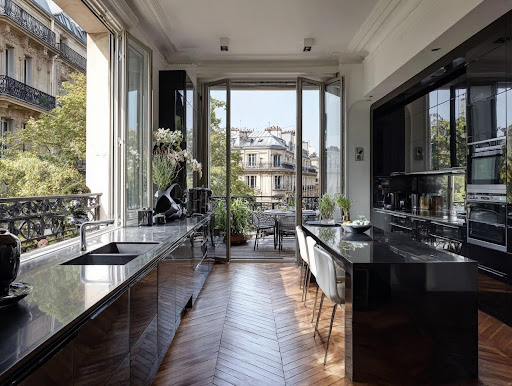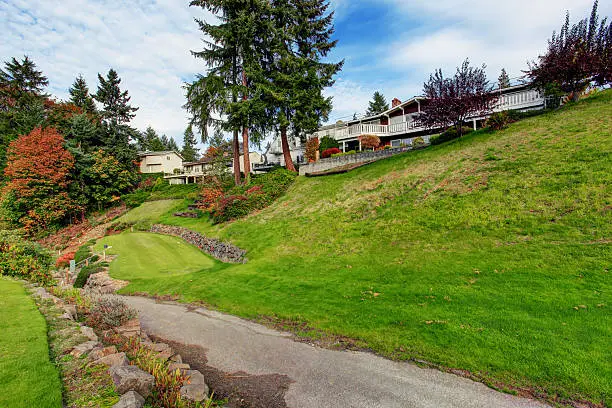Granite countertops are a stunning addition to any home, providing both durability and elegance. However, over time, even the most pristine granite surfaces can lose their luster. Regular polishing helps maintain the beauty of your granite countertops while providing protection against everyday wear and tear. In this comprehensive guide, we’ll walk you through how to polish granite countertops, ensuring they remain shiny and protected for years to come.
Why Is Polishing Granite Countertops Important?
Polishing granite countertops is more than just an aesthetic task. It restores the natural beauty of the stone, bringing out its unique patterns and colors while also adding a protective layer. Without polishing, granite can become dull, and its porous surface may become more susceptible to spills and stains. Polishing ensures your countertops not only look great but also stand up to daily use.
What Happens If You Don’t Polish Granite Countertops?
If granite countertops are left unpolished for too long, they may develop more than just surface-level dullness. Over time, the lack of a protective polish layer can lead to permanent stains, discoloration, and even structural damage. The surface will absorb liquids more easily, and food or drink spills could leave unsightly marks. Furthermore, granite is prone to scratching without the protection that a polish provides, meaning that countertops in high-traffic areas will degrade more quickly.
Materials and Tools You’ll Need for Polishing Granite
Before you start the polishing process, it’s essential to gather the necessary tools and materials. Here’s what you’ll need:
- Granite-specific polish: Choose a polish formulated specifically for natural stone surfaces like granite. These polishes are designed to enhance the shine and provide a protective layer against stains and scratches.
- Microfiber cloth: This soft cloth is ideal for buffing the surface without causing any scratches. Microfiber is recommended because it traps dust and particles, preventing them from scratching the surface.
- Non-abrasive sponge: Use this for gentle cleaning before applying the polish. A sponge with non-abrasive qualities ensures that dirt and grime are removed without causing any damage to the countertop’s surface.
- Granite sealer: For added protection, applying a granite sealer after polishing is highly recommended. Sealers penetrate the stone’s pores, creating a long-lasting barrier against liquids and stains.
- Warm water and mild dish soap: These will be used for the initial cleaning step to remove dirt, oil, and grime that could interfere with the polishing process.

Step-by-Step Guide to Polishing Granite Countertops
1. Clean the Surface Thoroughly
The first step in polishing granite countertops is to clean the surface thoroughly. Begin by mixing warm water with a small amount of mild dish soap. Use a non-abrasive sponge to gently scrub the surface, paying special attention to any food stains, oil spots, or grime buildup. Ensure that all dirt and debris are completely removed, as polishing over these materials can lead to scratches or a streaky finish.
Once you’ve scrubbed the surface, rinse the countertop with clean water and use a microfiber cloth to dry it. It’s crucial to ensure the surface is completely dry before applying polish, as any leftover moisture could affect the polish’s ability to adhere to the granite.
2. Apply the Granite Polish
Once the countertop is dry, apply a small amount of granite polish to the surface. You can either spray it directly onto the granite or pour a small amount onto a clean microfiber cloth. Begin by polishing in small sections, using circular motions to work the polish into the surface.
As you polish, ensure that the entire surface is evenly coated. This process will bring back the natural shine of the granite while filling in any minor scratches or imperfections. Be sure to follow the instructions on the polish product, as some may require a few minutes to sit before buffing.
3. Buff the Surface for a High Shine
After the polish has had time to settle, use a clean microfiber cloth to buff the surface. Again, use circular motions to evenly distribute the polish and bring out the shine. For best results, continue buffing until the countertop has a smooth, glossy finish.
Buffing is a crucial step because it not only enhances the countertop’s appearance but also ensures that any excess polish is removed, preventing streaks or residue buildup.
4. Seal the Granite (Optional but Recommended)
While polishing can restore the shine, sealing your granite countertops offers long-term protection. Sealing helps to prevent liquids from penetrating the stone’s porous surface, reducing the risk of stains and making future cleaning easier. After polishing, apply a granite sealer following the manufacturer’s instructions. This step is especially important for high-use areas such as kitchens and bathrooms.
Best Practices for Maintaining Polished Granite Countertops
To keep your granite countertops in top condition after polishing, it’s important to follow these maintenance tips:
- Wipe up spills immediately: Granite is a porous material, so liquids can seep in and cause stains. Always clean up spills, especially from acidic substances like wine or citrus juice, as soon as possible to avoid damage.
- Avoid placing hot pans directly on the surface: While granite is heat-resistant, placing extremely hot items directly on the surface can lead to thermal shock, which may cause cracks. Always use trivets or heat pads under hot pots and pans.
- Use cutting boards: Avoid cutting directly on the granite countertop, as knives can leave scratches, and the stone may dull your blades over time. Always use a cutting board to preserve the countertop’s surface.
- Clean regularly: For daily cleaning, use a gentle cleaner made specifically for natural stone. Avoid harsh chemicals or abrasive cleaners, which can strip the polish and damage the granite.
How Often Should You Polish and Seal Granite Countertops?
The frequency of polishing and sealing your granite countertops depends on the amount of use they get. In high-traffic areas like kitchens, it’s recommended to polish the surface every 3-6 months to maintain its shine. Sealing can typically be done annually, but if your countertops see heavy use, you might need to reseal them every 6-12 months.
Common Mistakes to Avoid When Polishing Granite
Polishing granite countertops might seem straightforward, but there are a few common mistakes to avoid to ensure the best results:
- Using the wrong polish: Always use a polish specifically designed for granite or natural stone. Household polishes or abrasive cleaners can damage the surface and leave residue behind.
- Skipping the cleaning step: Polishing over dirt or debris can scratch the surface, leading to a dull finish. Always clean the countertop thoroughly before applying polish.
- Applying too much polish: Overuse of polish can lead to streaks and an uneven finish. It’s better to start with a small amount and add more if needed.
Keep Your Granite Countertops Shining
Polishing granite countertops is an essential part of their maintenance, ensuring that they remain as beautiful as the day they were installed. With the right tools and techniques, you can polish and protect your granite surfaces with ease. Follow these steps to keep your countertops gleaming, and don’t forget to seal them regularly for lasting protection.
FAQ
How can I test if my granite countertops need sealing?
One easy way to check if your granite countertops need sealing is to pour a small amount of water on the surface. If the water beads up, the seal is still intact. If the water is absorbed within a few minutes, it’s time to reseal.
Is it safe to use household cleaners on granite countertops?
No, it’s best to avoid household cleaners that contain acidic or abrasive ingredients, such as vinegar, bleach, or ammonia. These chemicals can erode the polish and damage the surface. Instead, use a cleaner specifically formulated for granite.
How long does it take to polish and seal granite countertops?
Polishing granite countertops typically takes about 30 minutes, depending on the size of the surface. Sealing may take a bit longer, as you’ll need to allow the sealant to dry between coats. The entire process can usually be completed within an hour or two.













